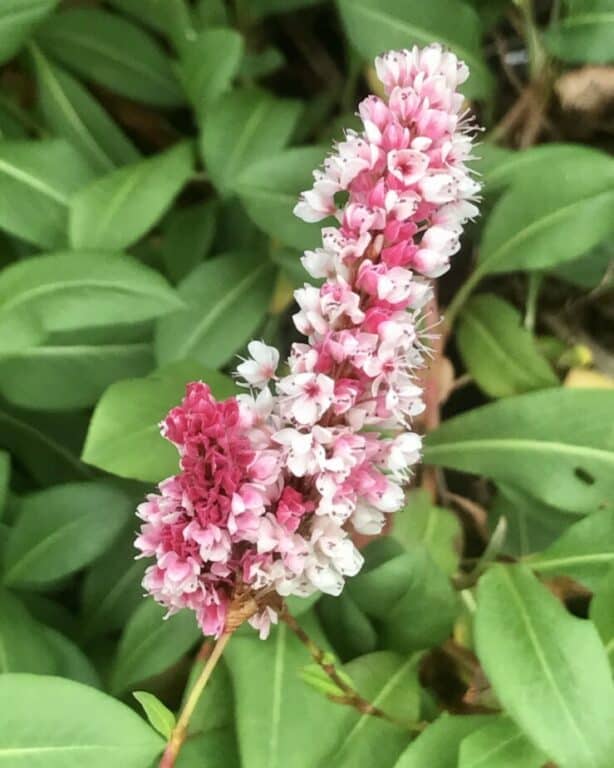This post may contain affiliate links. If you use these links to buy something we may earn a commission. Thanks.
Ground cover plants for clay soil are able to tolerate or thrive in clay conditions and have a low height or spreading tendency. Nearly all of the options in this post are low maintenance since they are pretty hardy and adaptive in general.
Growing conditions will improve over time as you cover exposed ground, and most plants are reasonably adaptable if you can set them up for success.
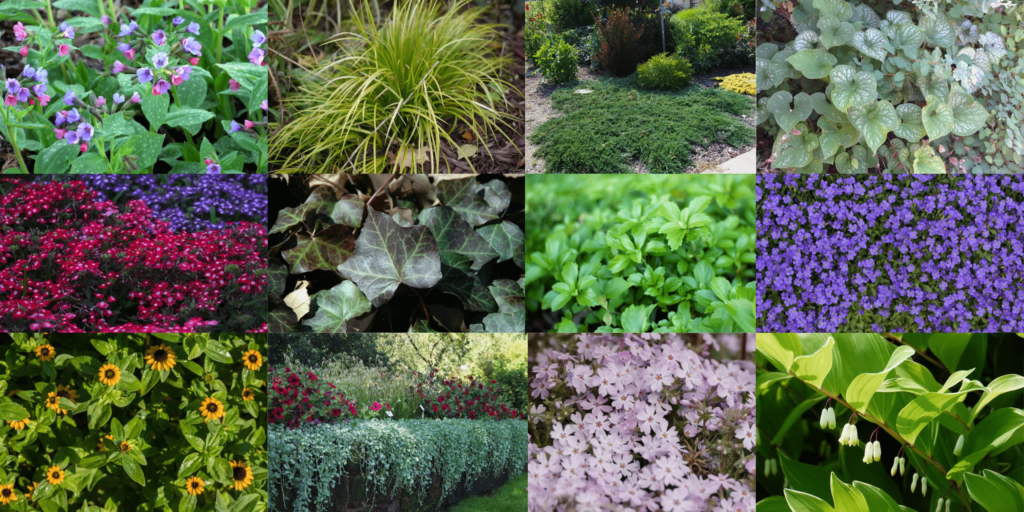
Success in clay soil looks like amending it with plenty of organic matter and aerating it if it’s, compacted. After a single round of physical loosening, it’s better left undisturbed after being topped up with organic compost or mulch.
Related: 5 Phases to Create Well-Drained Clay Soil for Growing Food (or anything else!)
These cover crops will help your soil retain moisture, gain pathways for water and air, suppress weeds once they establish, and provide habitat and food for pollinators.
Order Perennials online here or seeds here.
Know what else grows easily, is delicious, provides ground coverage, and rehabilitates clay? Mushrooms! See: Grow a Mushroom Garden at Home in 4 Steps
Contents:
- Annual ground covers for clay soil
- Perennial ground covers for clay soil
- Evergreen ground covers for clay soil
- Ground covers for clay soil in full sun
- Low plants that grow in clay soil and shade
- Edible ground covers for clay soil
Before planting any of these options check with your local invasive plant council or regional extension office for guidance on plants that may be invasive in your area.
Annual ground covers for clay soil
Annual ground covers need to be sown every year. They only live for a single season and need to be resown by seed.
Knowing about these clay-tolerant annual ground covers will allow you to experiment with color schemes, designs, and uses for the area at hand.
Annual ground covers are best for high-turnover areas to temporarily rest and regenerate a plot.
Every time you sow a ground cover on your clay soil and allow it to live out its life to death; you’re injecting compost into the ground. Roots grow and rot which creates room for air exchange and water absorption. These necessities allow insects and earthworms to pick up some jobs and get to work on further improving your clay conditions.
Alyssum
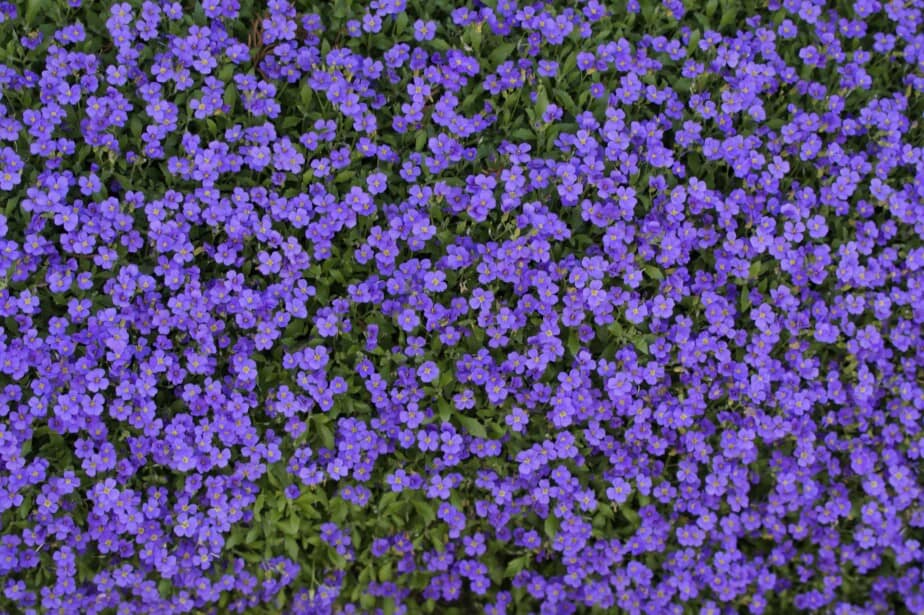
- Grows well in clay, needs drainage, is low maintenance
- Stands 6 inches high, and spreads up to 9″ wide
- Short-living perennial in zone 9-11, grow as annual everywhere else
- Attracts bees, flies, butterflies
Select colors and seeds from Etsy sellers.
Silver falls
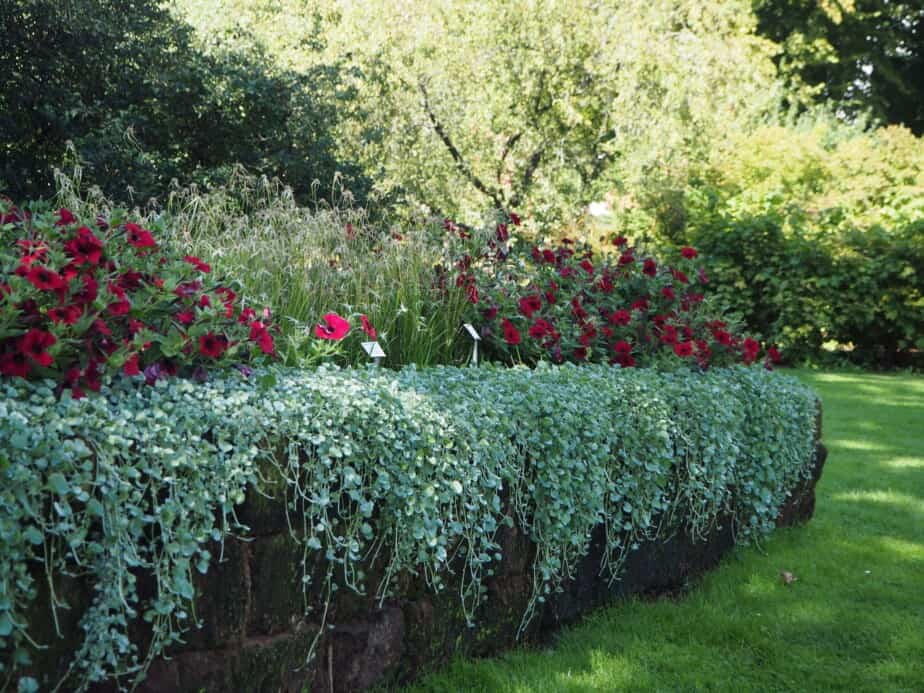
- Prefers moist well-drained clay soils, low maintenance, can tolerate walking traffic
- Stand 3-4 inches tall, and spreads 4 feet wide
- Perennial to zone 10-12, grow as annual everywhere else
- Covers flat surfaces gorgeously too!
Seeds are available here.
Purslane

- Can grow in clay soil and prefers moist well-drained ground
- Stands 4-8 inches tall, and spreads to 18 inches at maturity
- Annual, high in omega-3’s, and low maintenance
Seeds for common and unique varieties are available here. Nature Hills Nursery offers ‘rock purslane‘ plant starts.
Creeping zinnia
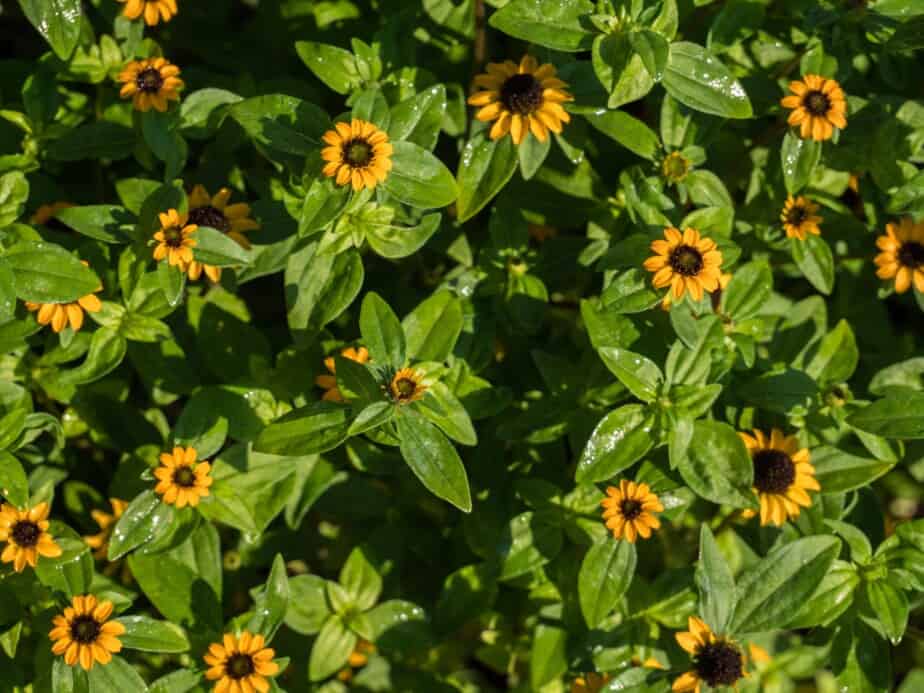
- Thrives in most soils even hard, heavy clay, and prefers drainage but can tolerate reasonable standing water for a short period, low maintenance, minimal care
- Stands 6 inches tall, and spreads to 18 inches
- Annual
- Butterflies, bees, hummingbirds
Seeds can be found here and plant starts here.
Verbena (trailing)
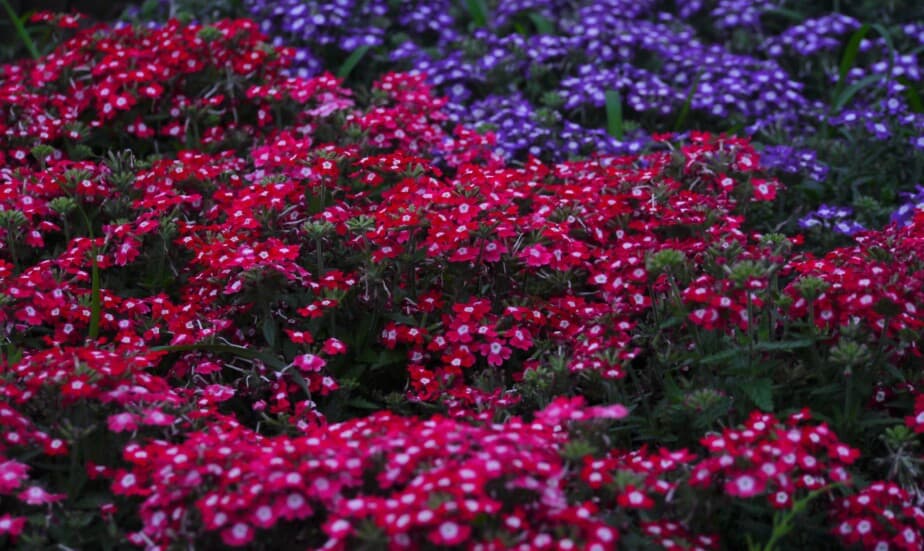
- Adaptable to clay if well-drained prefers moisture
- Stands below 1 foot, and spreads 2-5 feet wide
- Tender perennial to zones 8-11 but generally grown as an annual
- Great for bees and other pollinators
Various trailing verbena flower colors and mixes are offered from seed here.
Related: Best Bee-Friendly Plants For Clay Soil Improvement
Perennial ground covers for clay soil
Perennials are generally less maintenance than annuals since they come back every year for 3 or more years.
Perennials are ideal (over annuals) for soil protection and erosion prevention of permanent or semi-permanent areas.
This is a list of deciduous perennial ground covers and I’ll detail their preference for clay, ground cover habits, growing zones, and when they flower.
Order your perennial plants in one place here.
Solomons seal
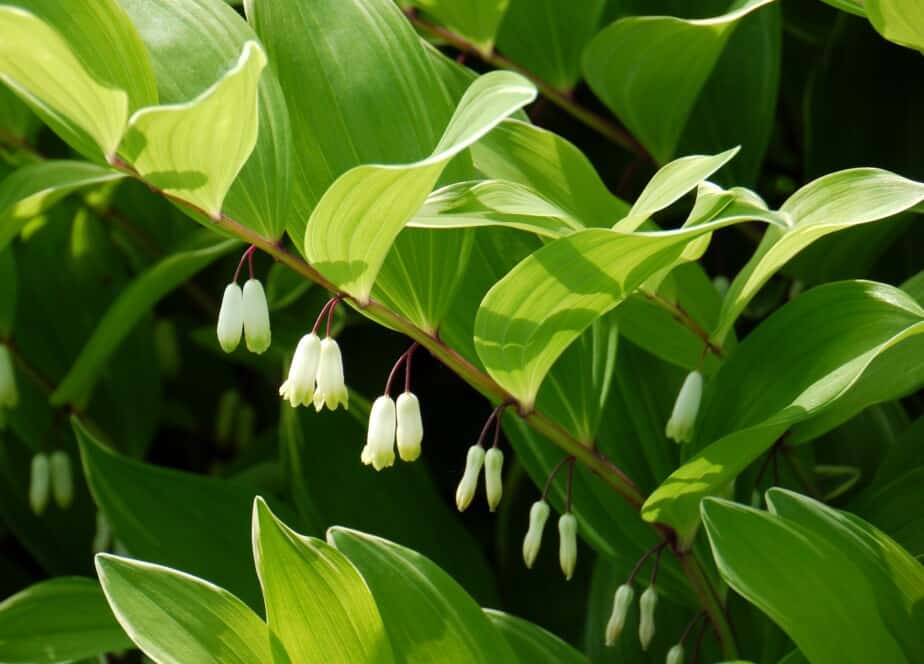
- Tolerates heavy clay, low maintenance
- Stands 1-2 feet tall, and spreads by rhizomes slowly
- Zones 3-8
- Blooms April to June, attracts a variety of bees
Variegated solomons seal plant starts are available here and several seed choices here.
Ladies Mantle
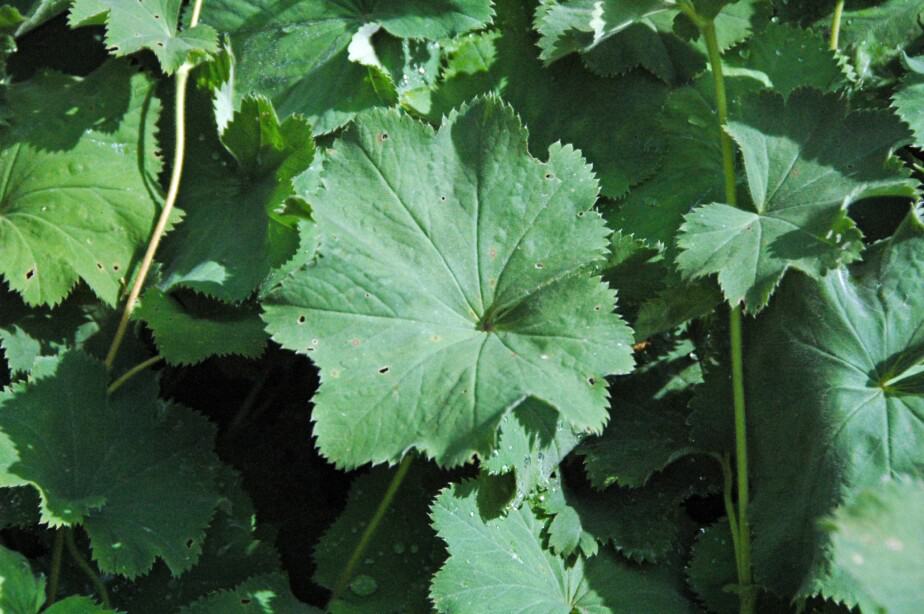
- Grows well in heavy clay soils and prefers drainage, requires little maintenance
- Stands 12-15 inches tall, and spreads 2-3 feet
- Zones 3-8
- Blooms from June to September, and attracts butterflies
Plant starts are available to order here. Seeds are available here.
Siberian bugloss
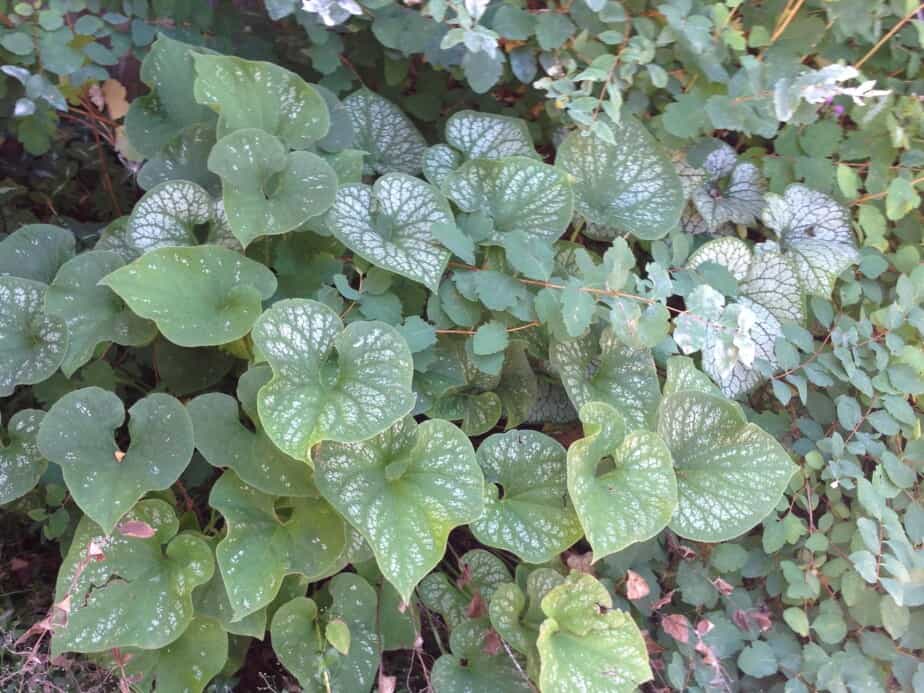
- Can thrive in clay soil, prefers plenty of organic matter, moisture, and drainage, low maintenance
- Stands 1-2 feet tall, and spread 2-3 feet wide, spreads by rhizomes
- Zones 3-8
- Blooms April to July, attracts bees
Seeds are available here.
Bugleweed (Ajuga)
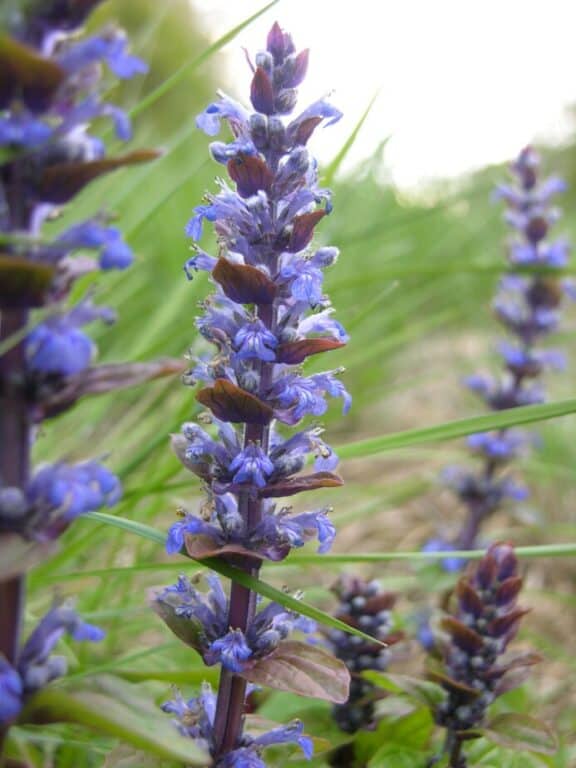
- Adapts well to clay, prefers good drainage, low maintenance
- Stands 4-8 inches, and spreads 6 inches to two feet, spreads very easily
- Zones 3-9
- Blooms May to June, very attractive to bees
Chocolate chip ajuga as a plant start is available here. Various seeds can be ordered here.
Bistort
- Tolerates clay soil, prefers plenty of moisture and reasonable drainage, very low maintenance
- Stands 8-30 inches high, and spreads up to 35 inches wide
- Zones 3-7
- Blooms July to August, good for pollinators
PalmBeachSeedCompany offers its seeds here.
Lungwort
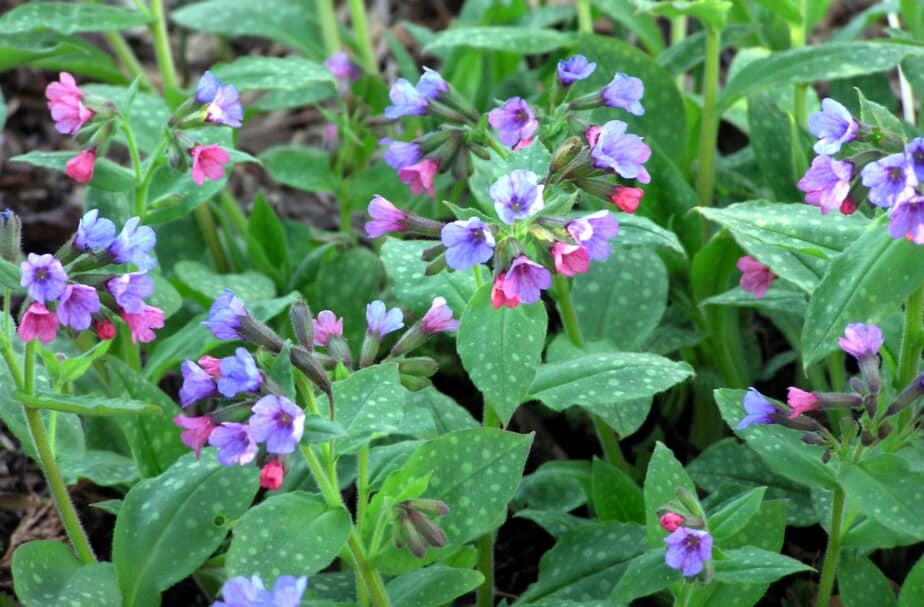
- Grows well in clay, prefers organic matter and moist conditions, low maintenance
- Stand 15 inches, spreads 2-3 feet wide
- Zones 5-8
- Blooms end of February into April, attracts bees
Four varieties of lungwort with varying flowers and leaves are available here as plant starts.
Evergreen ground covers for clay soil
Evergreens retain their leaves throughout the year.
While some of the below evergreen ground covers truly stay green all year, some don’t in harsh winters but are still considered to be evergreen.
For each evergreen ground cover; I’ll detail their clay soil preferences, growing zones, and other relevant information.
Creeping juniper (Juniperus horizontalis)
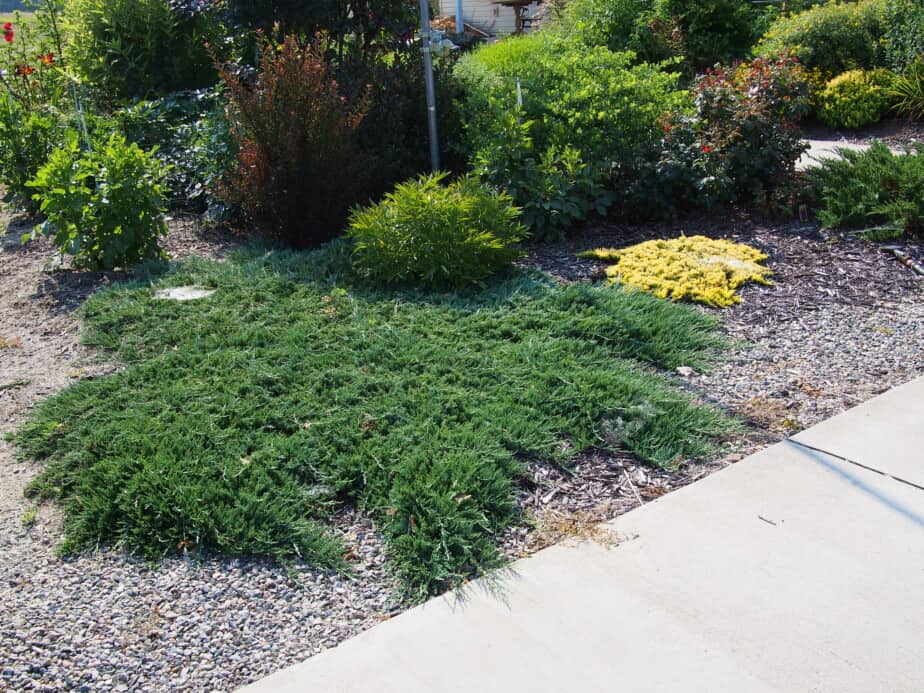
- Thrives in clay, can tolerate compaction, but requires reasonable drainage.
- Zones 3-9
- Smells and looks beautiful all year, is low maintenance, and has medicinal characteristics
Dozens of low-growing junipers are found here with various shades of green or blue-green coloring.
Golden sedge
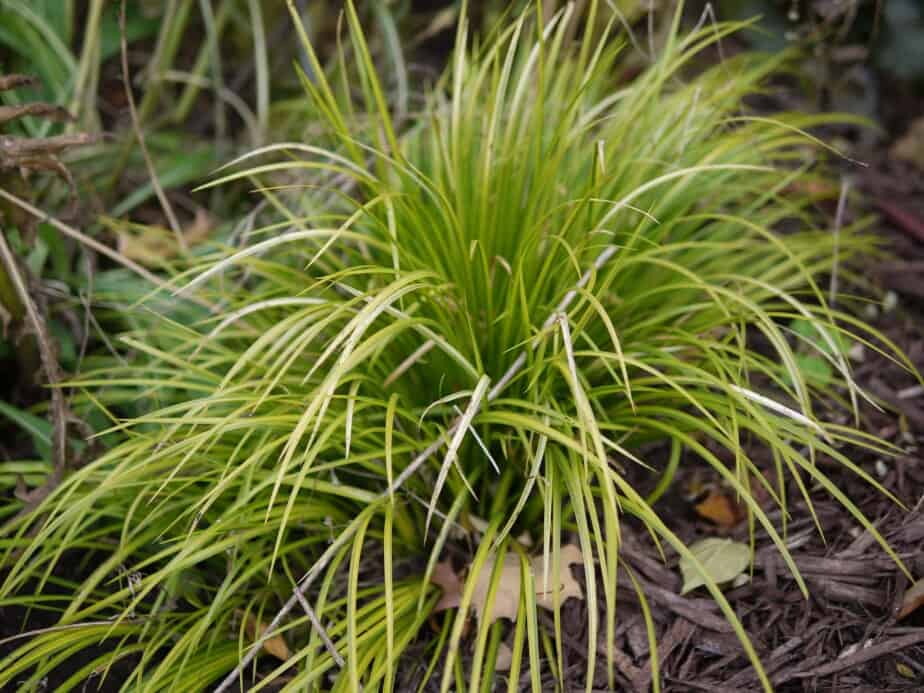
- Tolerates heavy clay soils and moderately wet conditions, low maintenance
- Zones 5-8
- Very showy and ornamental
Two choices of sedge are offered here of different colors.
Elephant’s ears (bergenia)
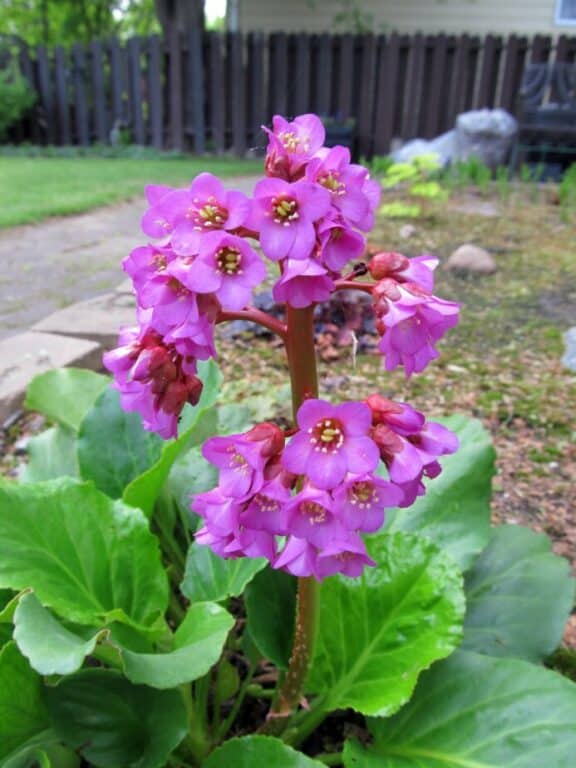
- Tolerant of many soils. Grows well in clay, plenty of organic matter preferred, and enjoys moisture, low maintenance
- Zones 2-9
- Stand 1 foot high, and spreads 2 feet
Seeds are available here and plant starts with varying flower colors here.
If there is specific information missing about these plants that you’re looking for, please leave me a comment!
Creeping Phlox
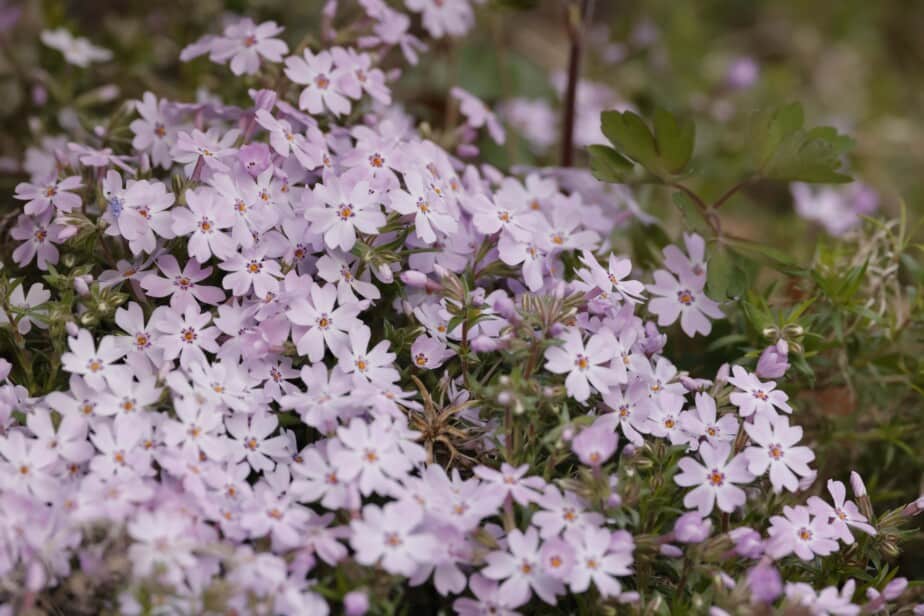
- Grows well in clay and prefers drainage, low maintenance
- Zones 3-9
- Attracts bees, butterflies, hummingbirds, and more, while blooming from May to September
Multiple flower colors are available by seed here or plant starts here.
Periwinkle
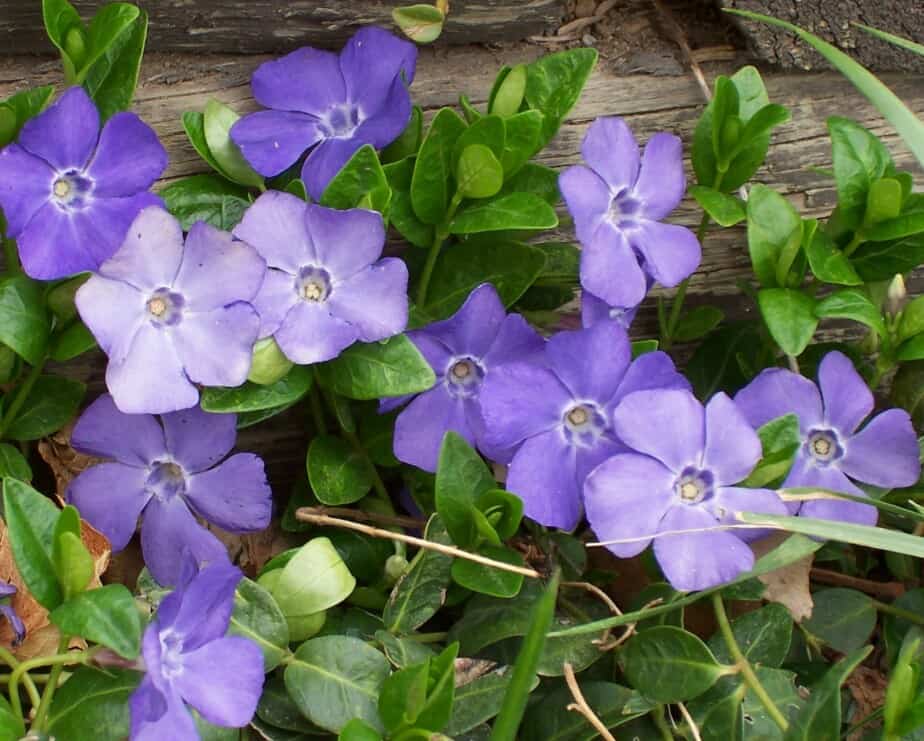
- Tolerates clay well, prefers rich slightly moist soil, low maintenance with good drainage
- Zones 4-8
- Can become a 2-foot mound but tends to spread out quickly, broadleaf evergreen
Have to say, these are very interesting varieties of periwinkle, take a look. Those are plant starts and seeds are available for your choosing here.
Bearberry
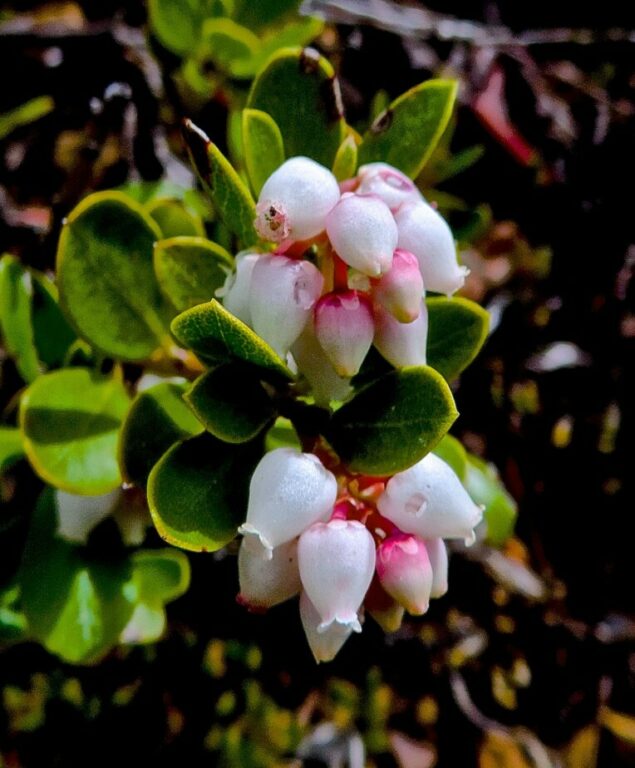
- Tolerates clay but prefers well-drained loose conditions, low maintenance
- Zones 2-6
- Attracts insects and birds
This plant is available here, or by seed here.
English Ivy
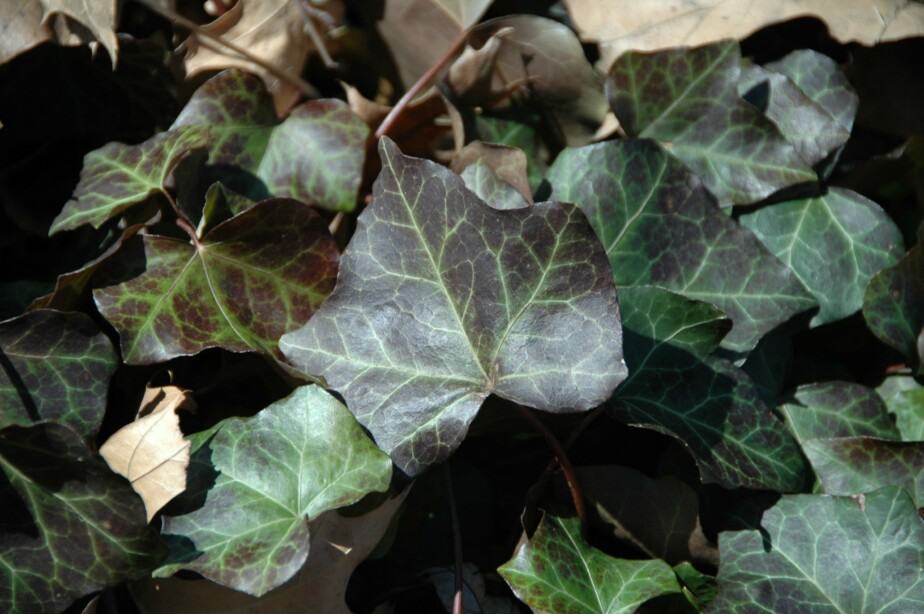
- Tolerates clay, and heavy clay and does better with plenty of compost, moderate maintenance
- Zones 4-8
- Vigorous climber and provides nectar to pollinators in fall
Two types of coloring are available here as plants or other seeds and plant starts here.
Japanese spurge
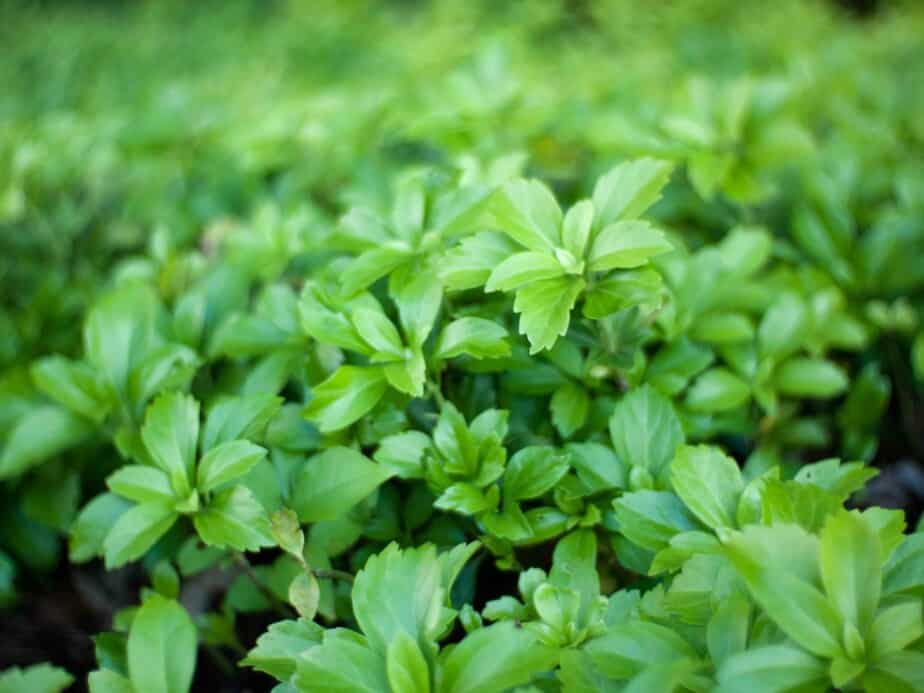
- Grows easily in clay, prefers moisture and drainages, low maintenance
- Zones 4-8
- Rhizomatous ground cover and provides for pollinators in spring
Three plant start options are here.
Candytuft
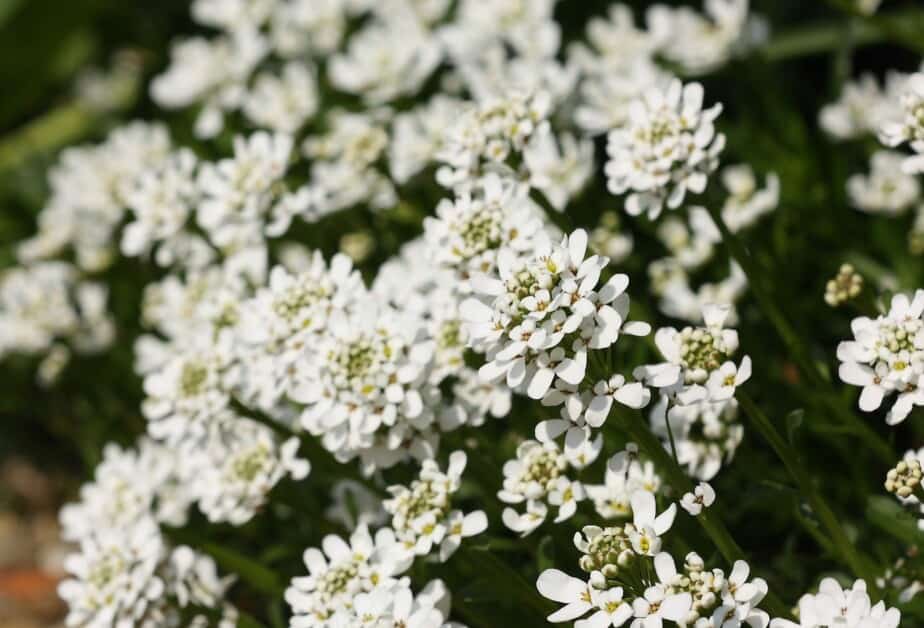
- Needs good drainage, can grow in aerated clay that has a foot of drainage, regular maintenance
- Zones 3-9
- Blooms early spring
These come in all sorts of gorgeous coloring. White plant starts here and endless colorings from seed are here.
Wintercreeper
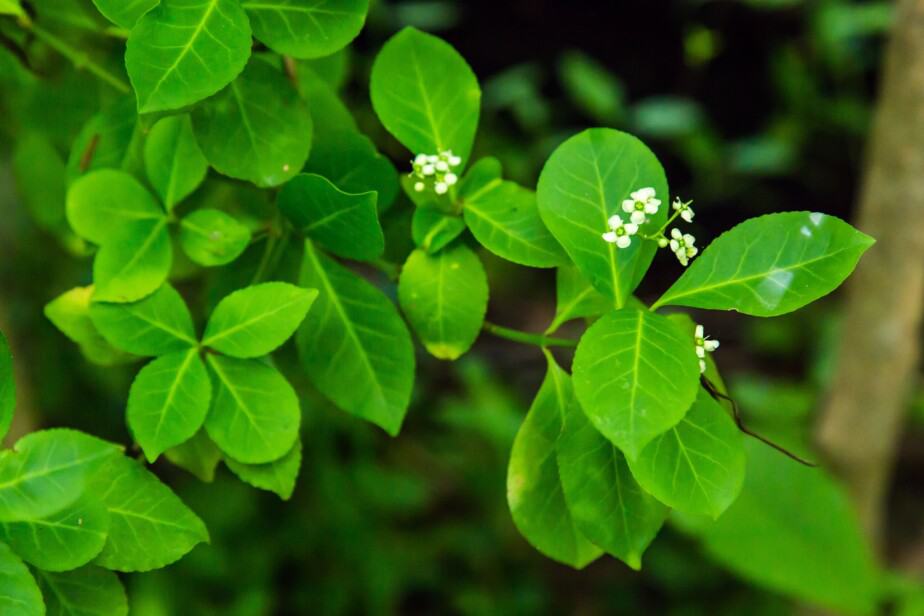
- Can grow well in organic-rich clay, prefers well-drained dry or moist soil, not suitable for heavy clay, low maintenance
- Zones 4-9
- Attracts birds with flowers and fruit, butterflies and bees too
Two types of variegated wintercreeper plant starts are available here. Seed choices are here.
Creeping jenny
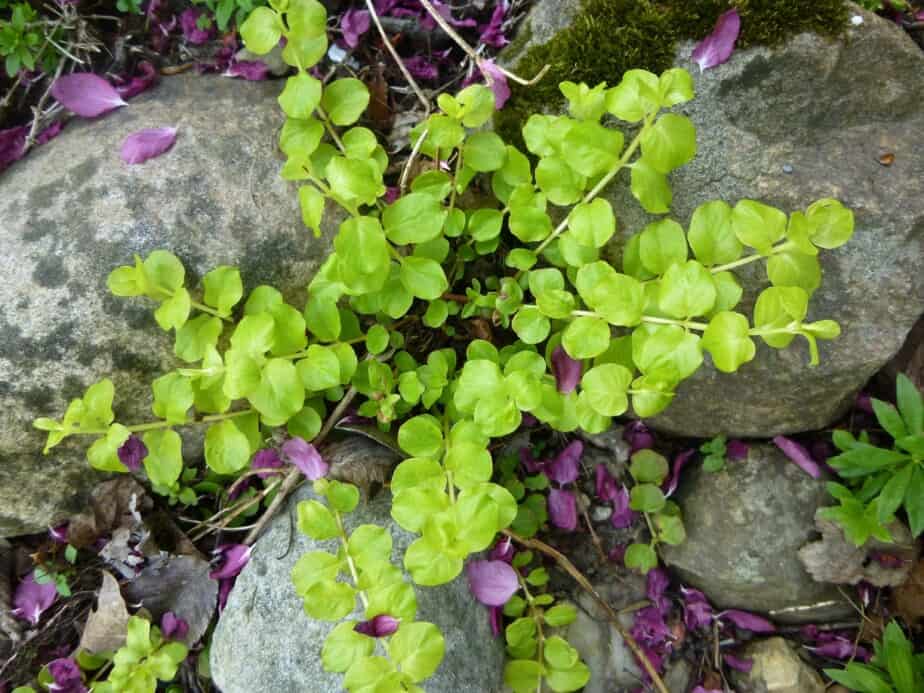
- Thrive in moist well-draining soil including clay, low-maintenance
- Zones 4-9
- A showy lime green or gold
Plant starts and seeds are here or here.
Creeping rosemary
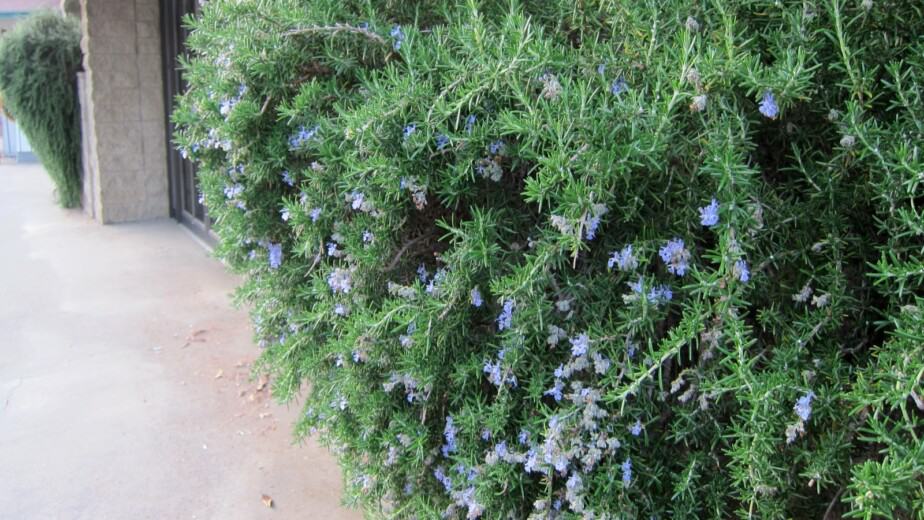
This article was originally published on foodforestliving.com. If it is now published on any other site, it was done without permission from the copyright owner.
- Grows well in drained soils, including clay as long as it isn’t waterlogged, occasional maintenance
- Zone 8-10
- Attracts bees and butterflies, and smells great!
This plant is available to order here.
Celtic Pride Siberian cypress
- Prefers well-drained moist soil and can grow in clay, moderate maintenance if shaping is desired
- Zones 2-7
- Very deer resistant
This specific low-growing evergreen cypress is available here.
Japanese Holly
- Prefers organic matter, tolerates reasonable drainage, and moderate moisture, and can grow in clay, low maintenance
- Zones 6-8
- Bright showy foliage
Compact, soft, gold, fern-like, and more types of this holly are available here.
Ajuga burgundy low
- Prefers soil high in either clay or sand, moisture, and drainage
- Zones 3-9
- Deer resistant, low maintenance, tolerates walking traffic
This is the same plant as bugleweed mentioned above but with a low-growing burgundy coloring. often referred to as “bronze.”
Coral bells
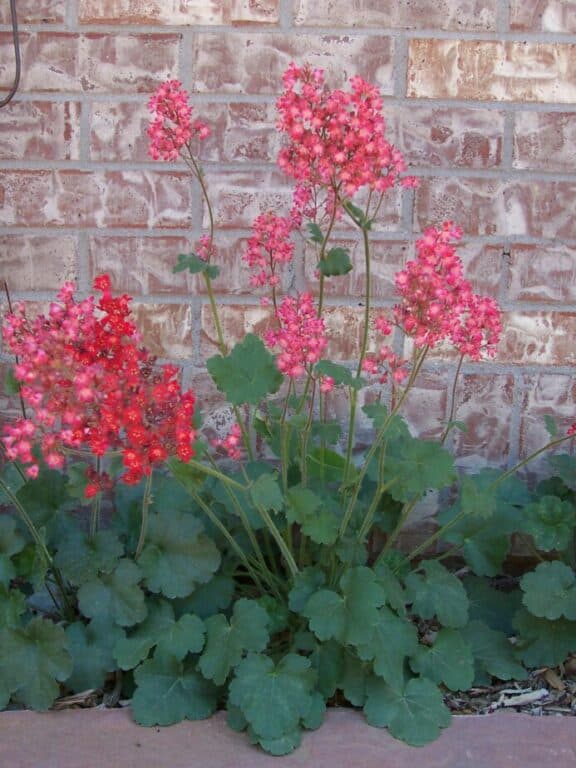
- Tolerant of clay, prefers even moisture, organic matter, and drainage, low maintenance
- Zones 4-9
- Bees, butterflies, hummingbirds
Multiple color options of plant starts are here and seeds are here.
Ground covers for clay soil in full sun
From the above annuals, perennials, and evergreens I’ve sorted them into this full sun list.
The best ground covers for full sun and clay have all been sorted into this list:
- Creeping juniper
- Ladies mantle
- English Ivy
- Creeping Phlox
- Bearberry
- Candytuft
- Wintercreeper
- Creeping jenny
- Creeping rosemary
- Celtic pride Siberian cypress
- Brass buckle ilex
- Alyssum
- Silver falls
- Purslane
- Creeping zinnia
- Verbena
- Elephants ears
Zone 2 Forest Garden Full Plant List (Sorted By Layer)
Low plants that grow in clay soil and shade
From the above annuals, perennials, and evergreens I’ve sorted them into this clay and shade tolerant list.
The best ground covers for shade and clay soil have all been sorted into this list:
- Solomons seal
- Siberian bugloss
- English Ivy
- Bugle
- Bistort – can be in full sun, but roots become invasive easily (not bad for an edible if you plan to consume it though!)
- Lungwort
- Periwinkle
- Japanese spurge
- Celtic pride Siberian cypress
- Ajuga burgundy low
- coral bells
Zone 3 Forest Garden Edible Plant List (Sorted By Layer)
Edible ground covers for clay soil
From the above annuals, perennials, and evergreens I’ve sorted them into this edible list.
The best edible ground covers for clay have all been sorted into this list. Now you can see which of your favorites can double-function as an edible or medicinal element in your landscape.
Disclaimer: Food Forest Living or its authors are NOT responsible for your consumption of any “edibles.” You must do your own research to make your own sole decision on what you do and don’t eat.
Creeping Juniper edible/medicinal berries
Solomons seal edible berries
Bugle – root, tubers, young shoots, and leaves
Bistort – leaves and shoots, roots can be cooked and dried into flower.

It was a lot of work sorting this many plants into categories!
Would any other categories be helpful to add to this page (other than annual, perennial, evergreen, sunlight, and edibility)?
Leave me a comment to let me know!
I hope you were able to find the best cover crop choices for not only your clay soil but you too!
Up Next:
Evergreens & Perennials to Improve Poor Draining Clay Soil
Prepare the Ground for a Food Forest Properly (Full Guide)
Recent Posts
There’s no shortage of full-sun ground covers for zone 4 climates! Each plant in this list can withstand the frigid temperatures and also enjoy the hot sun in summer. Full sun means that a plant...
There's no shortage of full sun ground covers, not even in zone 3! Zone 3 climates offer hot but short-lived summers and very cold winters. So each plant in this list can withstand the frigid...

